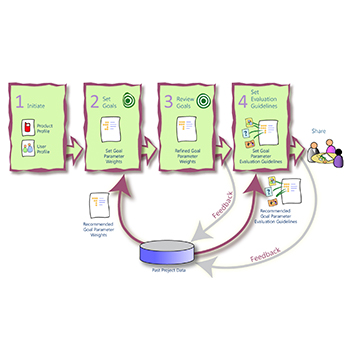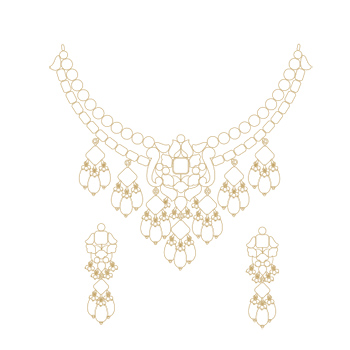Thesis
Batch 2011
(3 items)
ThesisBatch 2011
(3 items)
(3 items)
by Sherline Pimenta Krishna Kumar; supervisor/s: Prof. Ravi Poovaiah
by Anirudha N. Joshi; supervisor/s: Prof. N. L. Sarda
Software Engineering (SE) aims to have a systematic approach to the development, operation, and maintenance of software. SE process models, including waterfall, agile, and Rational Unified Process (RUP), guide software development projects. Human-computer interaction (HCI) is a multi-disciplinary field with a focus on the interaction between humans and computers. HCI also has a well-developed set of processes, activities, methods, and deliverables. Though HCI and SE have overlapping concerns, there are major gaps between HCI and SE in theory and practice. In this research, we focus on the integration of HCI activities into SE process models.
We review current literature in design, HCI, and process frameworks. In this framework, we identify HCI activities, methods, deliverables, and skills that are essential and must be integrated into SE processes. We use this framework as a baseline for integrating HCI activities and propose extended process models for waterfall, agile, and RUP. In each case, our approach is to integrate all the HCI activities that we consider essential, to integrate them at a point in the SE process where the HCI deliverables will be most useful, and at the same time to keep the original intents of the SE processes intact.
To demonstrate the validity of our process framework and the integrated process models, we propose the Usability Goals Achievement Metric (UGAM), a product metric that measures how well the usability goals of the product are achieved, and the Index of Integration (IoI), a process metric that measures the extent to which HCI activities are integrated in a project as compared to a prescribed process model.
To help set goals systematically, we developed the Usability Goal Setting Tool (UGT). UGT helps a design team break down high level goals into more granular goal parameters. We evaluate and refine UGT through formative (qualitative) evaluations and validate it through summative (quantitative) evaluations. With data from 65 industry projects, we show that UGT is internally reliable and has reasonable granularity and coverage. This data also established the need for such a tool. It was surprising to find that more than a third of the usability goals that were considered important in those project contexts were not achieved. We identify 8 goal parameters that are typically high-weighted but have insignificant weight score correlations.
by Parag Vyas; supervisor/s: Prof. V. P. Bapat
India has a rich tradition of jewellery and there are a number of styles of jewellery making in practice. Kundan is a type of traditional Indian jewellery that uses a framework of gold crafted in intricate details to set chips of gemstones driven by form. So far, studies have been limited to documentation of existing pieces, family heirlooms, and collections of royalties published in the form of photographic documentation. jewellery was rarely studied scientifically, where precise measurements and mathematical interpretations of objects under observation were possible. The fundamental building block of Kundan jewellery is the smallest semantic unit, often identifiable by a name. An assemblage of these put together in a certain manner constitutes a cluster, which in turn, by repetition, constitutes an article. This three-part study focuses on the smallest semantic units that form clusters and their interplay to form a neckpiece.
An early part of the study elucidates preferential semantic units, arranged in a particular manner as clusters. Form clusters created by these preferential semantic units consequently influence likeness in a positive way and were used to create a line drawing of an article. Several such clusters were thus created, driven by the need for a tool to objectively study preferences for Kundan jewellery. A grid was proposed and developed, for purposes of understanding, as a three-dimensional visual array in the form of presentation plates. This grid was created to test the effects of three variables: cluster pitch, proximity variety, and the number of semantic units in a form cluster. This three-dimensional model was used as a virtual "test space" to see in which area of this space the preferential likeness of subjects fell. Actual-size test plates were created for subject presentation. People were approached, and a survey was conducted by reaching out to people and investigating their responses to presented designs. The data was analysed and presented in an easy-to-understand manner using diagrams and charts. Findings embody preferential likeness in the age cluster, marital status, and social status of user groups. This research takes a form-based approach to studying jewellery preferences.


